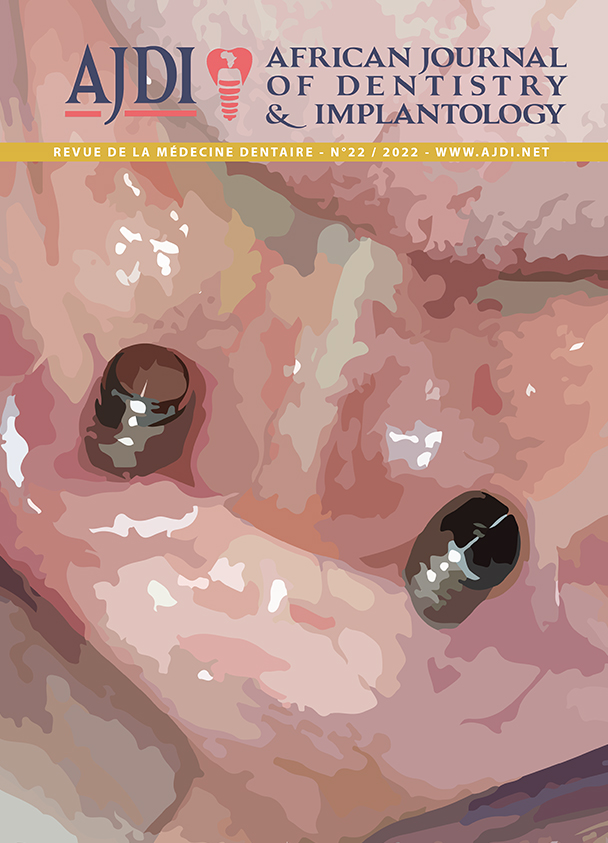
AJDI N:22
CLINICAL MANIFESTATIONS AND TREATMENTS OF DIASTEMAS AMONG PEOPLE ADULTS AT HOSPITAL NATIONAL DONKA.
Fadiga MS, Lama B, Nabe AB, Keita T., Loua J. B.
Abstract Download Full ArticlePERASSOCIATION OF PIEZOGRAPHY AND IMPLANTOLOGY IN THE MANAGEMENT OF A CASE OF COMPLETE MANDIBULAR EDENTULISM WITH RESORBED RIDGE.
Mohamed Ben Yaala, Yosra Mabrouk Aguir, Amel Labidi, Sana Bekri, Lamia Mansour.
Abstract Download Full ArticleLOWER LIP MUCOCELE: CASE REPORT AND REVIEW OF LITERATURE.
Zineb Idrissi Kaitouni, Youssef Naji
Abstract Download Full ArticleLIP AMPUTATION BY HUMAN BITE: ABOUT A CASE AT DONKA NATIONAL HOSPITAL.
A.T Bah, O.R Diallo, A. Bah*, I. Diallo, A. Diop, S. Sylla, A. Kourouma, M.D Diallo
Abstract Download Full ArticleNEUTRAL ZONE: PRINCIPLE AND TECHNIQUE.
Widad El Ghmari, Anissa Abdelkoui, Nadia Merzouk
Abstract Download Full Article